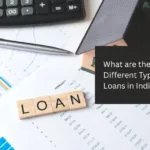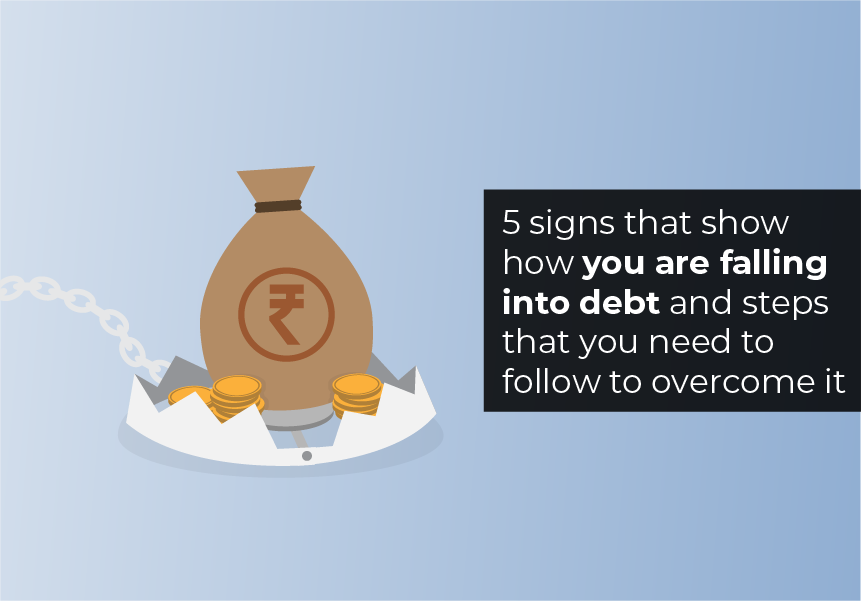
Debts are a part of one’s financial journey and need to be managed well. If debts are not reviewed at regular intervals, they might pose a threat to your financial goals. Any deviation in the execution of financial goals need to be taken seriously and addressed immediately.
There are various ways through which you can overcome your debt mismanagement. Debt consolidation and debt restructuring are two such ways. You can use one or both methods to get out of the debt trap.
What is Loan Restructuring?
It is a process in which the borrower and the lender agree upon an amount that the lender can pay back. In such cases, the agreed amount is lesser than the originally borrowed amount (principal). In other cases, it could be a new loan replacing the older one, to benefit you with better terms like lower interest rates or flexible repayment options.
What is Debt Consolidation?
It is a process where the borrower takes a single loan to pay off multiple small debts. All the outstanding debts are consolidated into one loan. Personal Loan, Credit Card Takeover Loan, and balance transfer are some instruments of debt consolidation.
Related Article : Why You Should Consider Debt Consolidation – Managing Debt
Debt Restructuring vs. Debt Consolidation
Debt consolidation and debt restructuring share some similarities and differences.
Goals: Both aim at helping the borrower to get out of the debt trap.
Terms of agreement: In both cases, the terms of the original agreements are changed. Also, the principal amount payable is altered.
Repayment to the lender: In both cases, the borrower must repay a minimum amount towards the loan to the lender.
Contract: In debt consolidation, a new contract is created as the borrower takes a new loan to repay old debts. During debt restructuring, changes are made to the existing contract by negotiating the amount to be repaid.
Reason: People opt for debt consolidation for several reasons, for example, when the borrower gets a loan at a lower interest rate or is unable to manage multiple payments. However, debt restructuring is ideal when the borrower is undergoing financial difficulties and doubts his/her own ability to repay his loan.
Impact on Credit Score: Debt consolidation may improve your credit score if you repay the new loan regularly. Under restructuring, you are defaulting on the original loan amount and therefore your credit score will take a hit.
Related Article : When You Can’t Make Loan Payments – Debt Reviewing Can Help
When Should You Restructure or Redesign your Loans?
If your volatile spending habits have landed you in a debt trap, and you are unable to pay your EMIs on time, you should start redesigning your loans. Sometimes, we bite off more than we can chew and end up piling up debts. Another reason for getting into financial trouble could be improper planning. These are the signs that indicate that you need to redesign your loans.
A few flagging situations that demand restructuring of your loan –
- You’ve been defaulting on EMI payments for more than 3 consecutive months.
- You’re unable to manage multiple payments arising out of different loans.
- You’re paying a high interest rate and/or penalty on your credit cards outstanding due.
- Your credit score is sinking, and you’re unable to get any additional loans.
- Your loan applications are being rejected.
- You are stressed and under financial pressure, and it’s affecting your productivity at work.
What should you consider while restructuring your loan?
Restructuring or debt consolidation is a temporary solution to ease your financial worries. You must look at the cause of your financial troubles and try to rectify it. You must change your spending habits in order to prevent you from landing in the same situation again. You should consider which form of consolidation is right for you. You must also keep a track of your credit score and see how it impacts your future borrowings. Defaulting on a loan has severe consequences on your credit history. Therefore, if you are not totally broke and are able to repay your loan amount you must talk to the lender to extend your loan tenure. This will reduce your EMI and will make room for you to get your finances on track. If you are taking a secured loan to consolidate your debts, you must keep in mind the risk involved in pledging your asset. Seek professional advice if required to help you curb your debt burden.
How can I restructure my Loan?
As mentioned above, there are certain instruments, such as personal loans and credit card takeover loans, that help you regain your financial fitness.
You can avail personal loan ranging from Rs. 50,000 to Rs. 10,00,000 at competitive interest rates. You can take a lower-interest personal loan to pay off all your existing loans. This will save a you a lot of money each month and will help you streamline your payments regularly. Also, they are easily available with minimum documentation. They come with flexibility of repayment. You can prepay or foreclose the personal loan without any additional charges post 6 months of loan repayment
Credit Card Repayment Loan is also a kind of personal loan designed to cover debts from credit cards. The credit card takeover loan is taken to clear various outstanding credit card bills. The advantage of taking this loan is that the interest rates on this loan are lower than the credit card interest rates. Credit cards usually demand an interest rate of 24-36% annually, whereas, on the contrary a Credit card takeover loan demands 16-22% which is much lower as compared to the former charges. This customized personal loan helps you clear all your credit card debts in one go thus improving your credit score.
Conclusion
You do not need to be an expert to understand when you are heading towards a financial crisis. Plan your budget carefully and review it at regular intervals to avoid any deviations. In case of debt loads, turn to debt restructuring or debt consolidation to curb any further debt piling and enjoy being an in-house money management guru!







